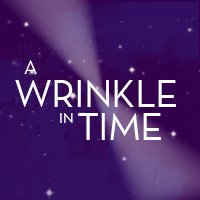The last two characters in the story are seen clearly in these last two chapters.
IT is a gigantic, disgusting brain that controls the minds of all the inhabitants of Camazotz and does all the thinking for them. IT is pure evil, total Darkness, and is what captured Mr. Murry when he tessered to Camazotz by accident some tie before the action of the book begins. IT, which claims to have all intelligence and all efficiency, is vulnerable only to the one thing it lacks: love.
Aunt Beast is found when Mr. Murry teasers himself, Calvin, and Meg away from Camazotz in a desperate attempt to save themselves from IT and Meg is subsequently injured, Aunt Beast is one of the tentacle beasts native to the planet they then land on who nurses Meg back to help. She is kind and loving, and helps to heal Meg’s body and mind.
Aunt Beast
In this chapter, Aunt Beast is trying to help Meg understand the importance of love. Finally, Aunt Beast ends up embodying love and singing Meg to sleep with an indescribable song. Meg’s interactions with Aunt Beast are reminiscent of her first interactions with the Mrs. W’s – Meg judged them negatively based on their appearances and then began to understand that, regardless of how they look, they are forces for good.
Meg tries and fails to explain sight to Aunt Beast, who is blind. Meg winds up understanding that sight is a sense that can conceal as much as it reveals, since it shackles a person to a particular conception of the universe. Meg learns that it is not important to teach Aunt Beast about sight. By accepting this, Meg shows a newfound humility in the face of the universe’s mysteries, and she also opens herself up to receive love from Aunt Beast that comes in the form of a song she can’t understand.
In this chapter, Meg is trying again to explain something. She is trying to tell the beasts who the Mrs. W’s are. Again, Meg’s dependence on rationally describing their appearance lead her astray. For one, the beasts lack sight so this description is meaningless to them. More important, appearance has nothing to do with essence, so a description focused on appearance is a poor representation of who somebody actually is.
Calvin – somebody whose strength has always bee communication, and whose personal experiences have led him to understand the gulf between appearance and essence – has more success by describing the Mrs. W’s as embodiments of good, or angels. It’s important that Calvin uses the word “angels” to describe them, since the reference is explicitly Christian. Here, the writer is explicitly using a Christian term to describe fighters for good. It’s unclear whether she means this as a metaphor or whether the Mrs. W’s are literally angels, but it certainly makes it clear that Christianity is the underlying idea in the cosmology of the book.
The Foolish and the Weak
Meg goes back to Camazotz to try to save Charles Wallace. Calvin, scored about what will happen to them, is struggling with what he perceives to be the incompatibility between the ideas of fate and free will. If something is fated in the universe, how can an individual still have free choice in the decisions he or she makes? Mrs. Whatsit, then, gives a lovely metaphor of sonnets – poems with a strict form and rhyme scheme. Despite the constraints of the form, individual sonnets have different words, ideas, and meanings within them. Human beings, Mrs. Whatsit seems to be saying, operate within a predetermined form, but we have choices about what to do within that form. This stands in opposition to the people of Camazotz, who live within a form, too, but who do not have choices within that form, since they must all be alike.
This is a lovely way to understand ideas of the relationship between the struggle of good vs. evil, and the importance of nonconformity. Sonnets would be neither interesting nor powerful if they were all alike – and people are the same. In order to further the good of the universe, a person must make individual choices, or else he or she gives up his or her innate power. Without this power, evil would reign like it does on Camazotz.
Meg is alone on Camazotz fighting IT to save Charles Wallace. It is here that she finally realizes the power and importance of love. In previous attempts to save Charles Wallace, the characters focused on individuality, reciting the Declaration of Independence, for instance, in order to set him free. While these attempts nearly worked, none was powerful enough to combat IT. In this final attempt, Meg realizes that the only force powerful enough to combat IT is love, since love is something that IT lacks entirely. Meg realizes that she must abandon all commitment to rationality and focus simply on loving her brother, which she does successfully.
This is the ultimate vindication of the power of love, as it says that love is literally the only force in the universe that can combat evil. The arc of the book suggests that the embrace of love comes in several forms – first is love of self, which includes accepting one’s own nonconformity, and second is turning that love outward to others. As the book’s characters demonstrate, this kind of love is contagious, in that it teaches the recipients of love to love themselves and others in turn.
Now that you know how important love is . . . WHAT ARE YOU GOING TO DO WITH IT?

